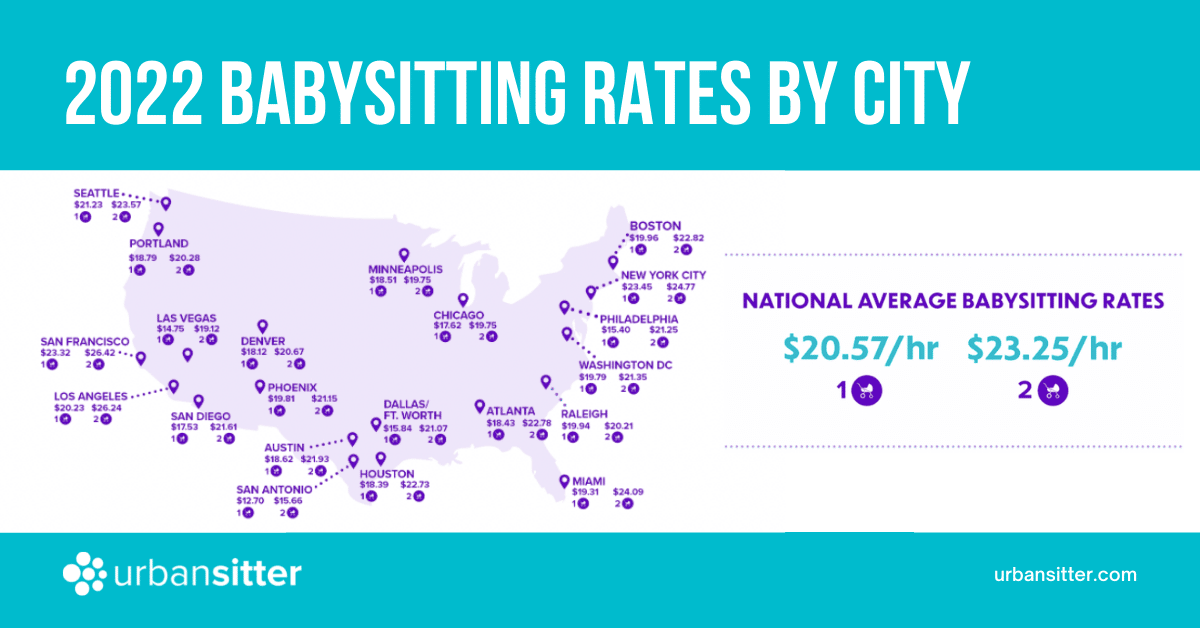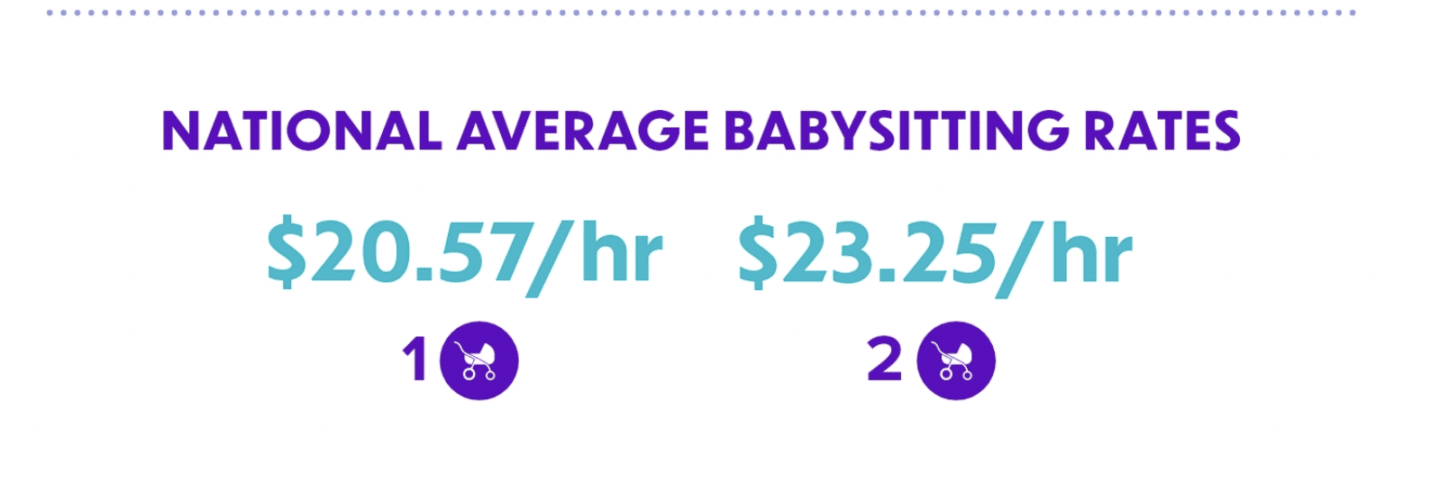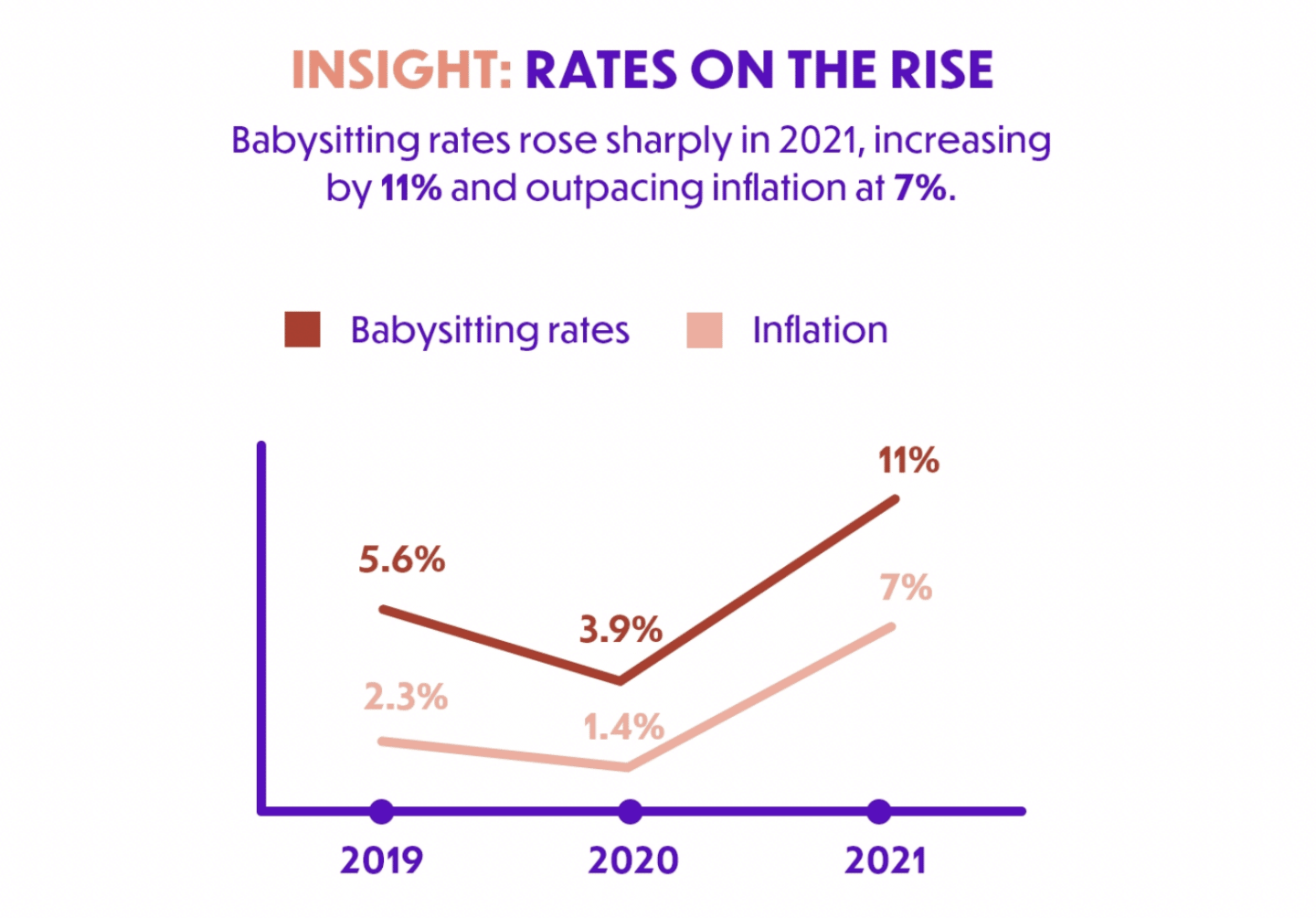Here’s how much parents are paying babysitters in 2022—and yes, it’s a lot

UrbanSitter
Babysitting rates have skyrocketed due to the pandemic.
While it’s normal to wonder if you’re under-paying or over-paying a babysitter based on comparative rates and care, the pandemic has majorly affected babysitting rates in 2022.
Are you curious about what rates are normal for your area? What other people are paying their sitters? You’re in luck, because UrbanSitter has laid it all out for you. And, spoiler alert, rates have skyrocketed throughout the pandemic for many reasons.

UrbanSitter, a site where families can search for childcare options and other household help, analyzed booking data from more than 10,000 families from last year to determine babysitting rates across the U.S.
Here’s what they found.
- An 11% increase in babysitting rates since 2020, outpacing inflation at 7%. From 2019 to 2020, it rose just 3.9%.
- The national average for babysitters is $20.57 per hour for one child, and $23.25 per hour for two children.
- The most expensive city to hire babysitters is New York (naturally), with an average rate of $23.45 for one child.
- The least expensive city is San Antonio, coming in at $12.70 per hour for one child.
- 40% of nannies in the U.S. make between $30,000 – $50,000 per year.

“The bumps that we saw this last year, it was just really disproportionate to anything we’ve seen previously,” Lynn Perkins, the founder and CEO of UrbanSitter, tells Axios.
Most babysitters base their hourly rates on childcare experience, the different levels of job responsibilities and expectations, and the local cost of living. Because of the pandemic-related labor shortage in the U.S., there are fewer childcare providers available—and the ones who are available can charge more because of it. Additionally, having someone come and out of your home during a pandemic comes with its own set of rules and expectations.

Perkins says that people who have changed career paths amid the pandemic have found their way to UrbanSitter, too.
“We have seen more former teachers, nurses, early childhood education specialists, and others leave their jobs to pursue other opportunities,” including babysitting, tutoring and caregiving for older adults, Perkins said.
These rates, despite being fair, aren’t affordable to every family, however. Many parents are already financially strapped due to the pandemic, increasing costs, and job loss. Childcare costs already consume approximately 1/3 of women’s incomes.
However, with many parents still working remotely, many families are opting for babysitters to come to their home rather than sending their children to a traditional daycare.
“It’s like the perfect storm of inflation and supply and just getting a lot more demand for individual care providers,” Perkins tells CBS News. “We have more demand because a lot of families have decided with flexible work schedules that returning to a traditional daycare doesn’t make sense for their families.”
For more information about national babysitting rates, or to find average housekeeping, pet-sitting, or childcare rates in your city, visit UrbanSitter’s latest survey results here.








































